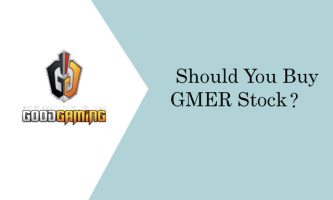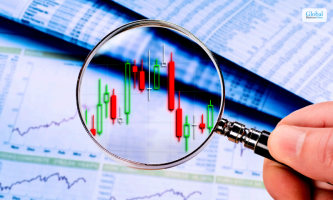Learn How to Read Option Chain: Benefits and Prospects

An options chain is a listing of all the option contracts. Both puts and calls of a particular contract are included. Most of you search for how to read an option chain.
Here, I want you to focus on the put and call elements.
The call option allows you to buy a particular stock. However, the put option is used when selling a stock.
But there are other elements as well. These are the strike price, expiry date, and color coding.
There are many benefits of understanding how options chains work. Firstly, it helps you to understand all options for any underlying asset. I feel that you must know how to read option chains to make informed stock trading decisions.
You will then find it easier to extract essential insights and track the probable future movements of stocks.
Experts also say that knowledge of option chains helps you evaluate the depth and liquidity of any option contract.
Finding Options Information

It is vital to track information about individual options. For instance, you can see the strike data in the middle. All information related to calls and puts at the same price is mentioned adjacent.
Real-time Options Chains on Financial Websites
You can access any vital website to gain knowledge of real-time options. These options are also listed in relation to the related stock prices and other details. I will recommend the following sites to learn about real-time option chains:
- Yahoo Finance
- Charles Schwab’s website
- WSJ
- Other registered or FINRA-recommended sites
Links To Options Chains on Stock Price Charts
You can easily access and review the option prices from the stock price charts. Moreover, these charts tell you about the current trends of specific options.
If you are a trader, then stock charts are an excellent data source for you. You can easily see the highs, lows, and even the “chops” from the chart.
If you read all the details on the chart, you can quickly learn how to read the option chain. At least the basics.
What An Options Chain Tells You?

Options chains give you some stock data. This data is helpful when making trading decisions.
Derivation Of Option Value from Underlying Securities
As I said, you can do a good trend analysis from the Options chain. If you don’t know how to read an option chain, learn that first.
After that, you can anticipate the dates when you will get the best value of a stock. Accordingly, you can also fathom the best date to buy and sell the stock.
When you can do that, you’ve learned how to read an option chain.
You must agree on a date when you will sell or buy an asset at an agreed price. At the same time, the price of the future contract can be derived from the underlying asset price.
Distinction Between Calls and Puts
Calls and puts are basically indicators to buy or sell a stock.
Definition Of Call Options
There are mainly two options. When you read how to read an option chain, you will come across these two.
The call option gives you the right to buy the underlying option at a given price on a given date.
Definition Of Put Options
The opposite of a call is a put option. Put means to ward off or sell an option. But you must again specify the projected price and date of sale.
Expiration Dates and Their Impact on Option Value
There are expiration dates for any stock. For instance, you buy the call option for any stock that expires in June. This stock has only 30 days to expire, so its value will depreciate immediately. You get such info from the expiration date of the stock.
Order Of Columns in An Options Chain
The order of columns within the options chain is for your convenience. You need to consult all the parameters in descending order. There are individual symbols for each option.
However, the symbol for option contracts of the same stock would be different, with a different expiration date. You should note these differences. It will give you a clear idea of the contract’s expiration date. The general order of columns is:
- Strike price
- Symbol
- Last price
- Change in price
- Bid price
- Ask price
- Volume
- Open interest
Understanding Calls and Puts

When you buy any options contract, you get the right to buy or sell it. However, that should only happen at a stipulated date and fixed rate. But you need concrete knowledge of how to read an options chain.
Clicking the “buy” option does not fix your date and price. You can negotiate that yourself.
You sell it on the due date. Or you may sell it any time before then, too.
Americans have traded 39 million option contracts on average in 2021. CNBC shows that the rate increased by 35% on a YoY basis.
However, NASDAQ data shows that only 7% of Americans sell the option contract on the last expiry date.
You need to click the call or put option to get the option and authorization to buy or sell the stock.
Call Options:
The call option is there for you to request to buy an option contract. Now you know how to read an options chain. That means you also know you must buy it within the stipulated date and price.
However, there are some additional clauses too. But most importantly, one call option gives you the right to buy 100 shares at a specific price
Put Options:
You already know that the put option confers the right to sell the stock at a given rate and within a fixed time.
However, the put value or the stock value at the time of sale will increase when the value of your underlying stock decreases.
Right To Sell 100 Shares at A Specific Price
Like the call option, the put option also gives you the right to sell 100 shares simultaneously and at a fixed price. The FINRA decides this bracket. No investor or brokerage firm can alter this value.
You will know more similar regulations when you learn how to read an options chain.
Impact Of Strike Prices on Option Prices
You learned about the strike price while searching for how to read the options chain. However, you should also know its impact on option prices.
The strike price decides the intrinsic value of any stock.
The premium of any option grows as the monetary value of the option also grows. However, it decreases when the option starts losing its economic value.
To calculate the premium, please add the stock’s intrinsic value to the time value.
I have already discussed the situations responsible for an increase or decrease in a stock’s contract value (price).
Execution Of Options Based on Market Price Crossing the Strike Price
Regarding options trading, the market price must be more than the stock price. Only then can you execute the option. For instance, consider a stock’s current trading price of $30 for each share. Then, you can purchase the call option for $45. However, that option would not be worth the same if the market price weren’t $45.
Conclusion
This article explains how to read option chains in depth.
The options chain is a practical decision-making guide for traders and investors. It helps them to understand the best options available to them for buying a specific asset.
As I explained above, you must look for the strike price, expiration date, and other details. To understand how to read an options chain, you must know the basics: call and put. A Call permits you to buy the stock. On the other hand, Put ensures that you can sell the stock. The final price of the option is the premium. Read my full article to learn how to calculate it.
For More Business Articles Click Below!!
- Why Do You Need a Fundamental Analysis of Stocks?
- How Does a Share Work? Benefits, Challenges, and Best Tips
- The Comparison of Stock Vs. Share: Definition, Significance, and Values
- What is Pattern Day Trading? – Fundamentals of Pattern Day Trading
- Technical Analysis Vs Fundamental Analysis: What’s The Best Way to Analyze Stocks?













